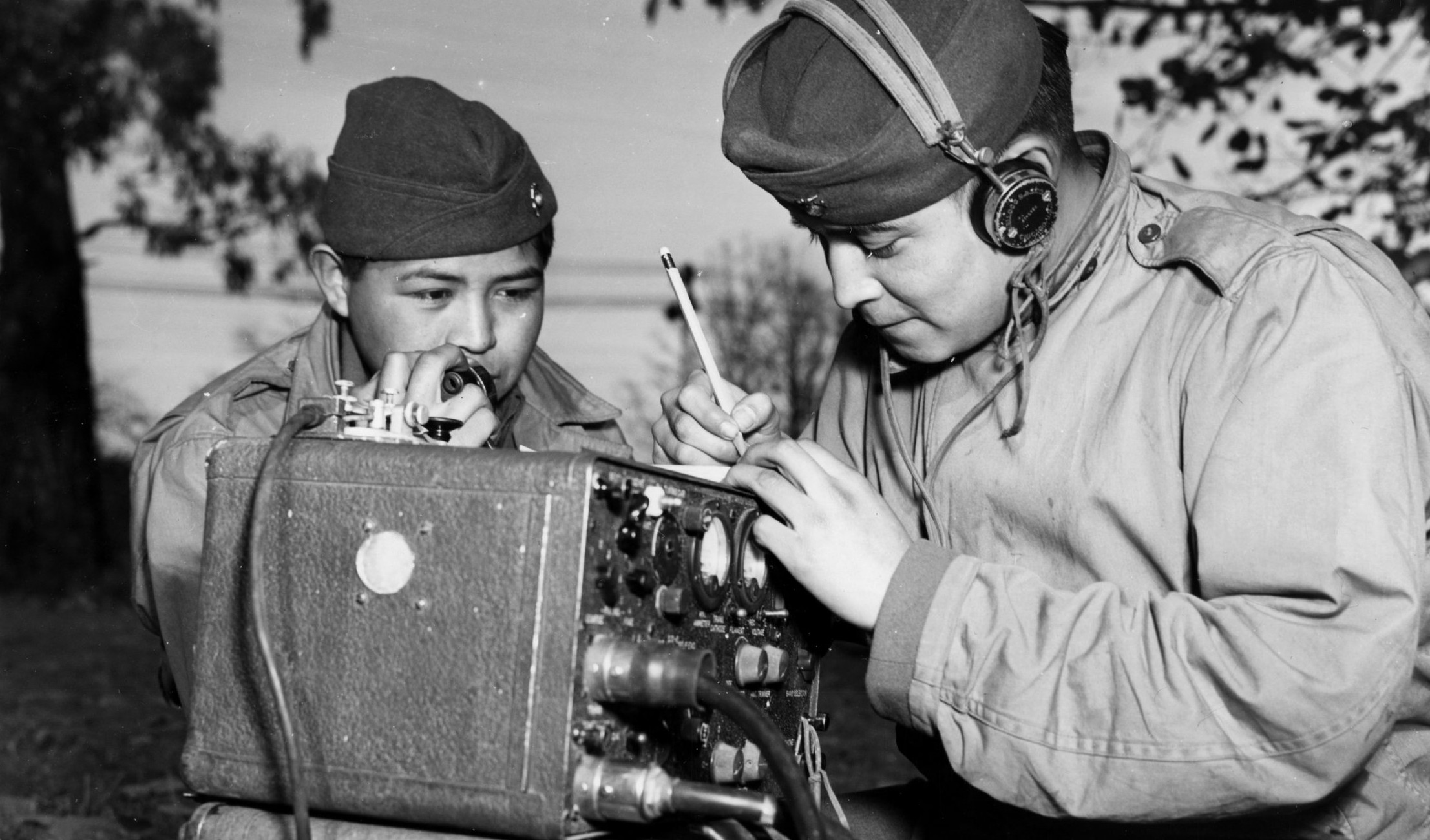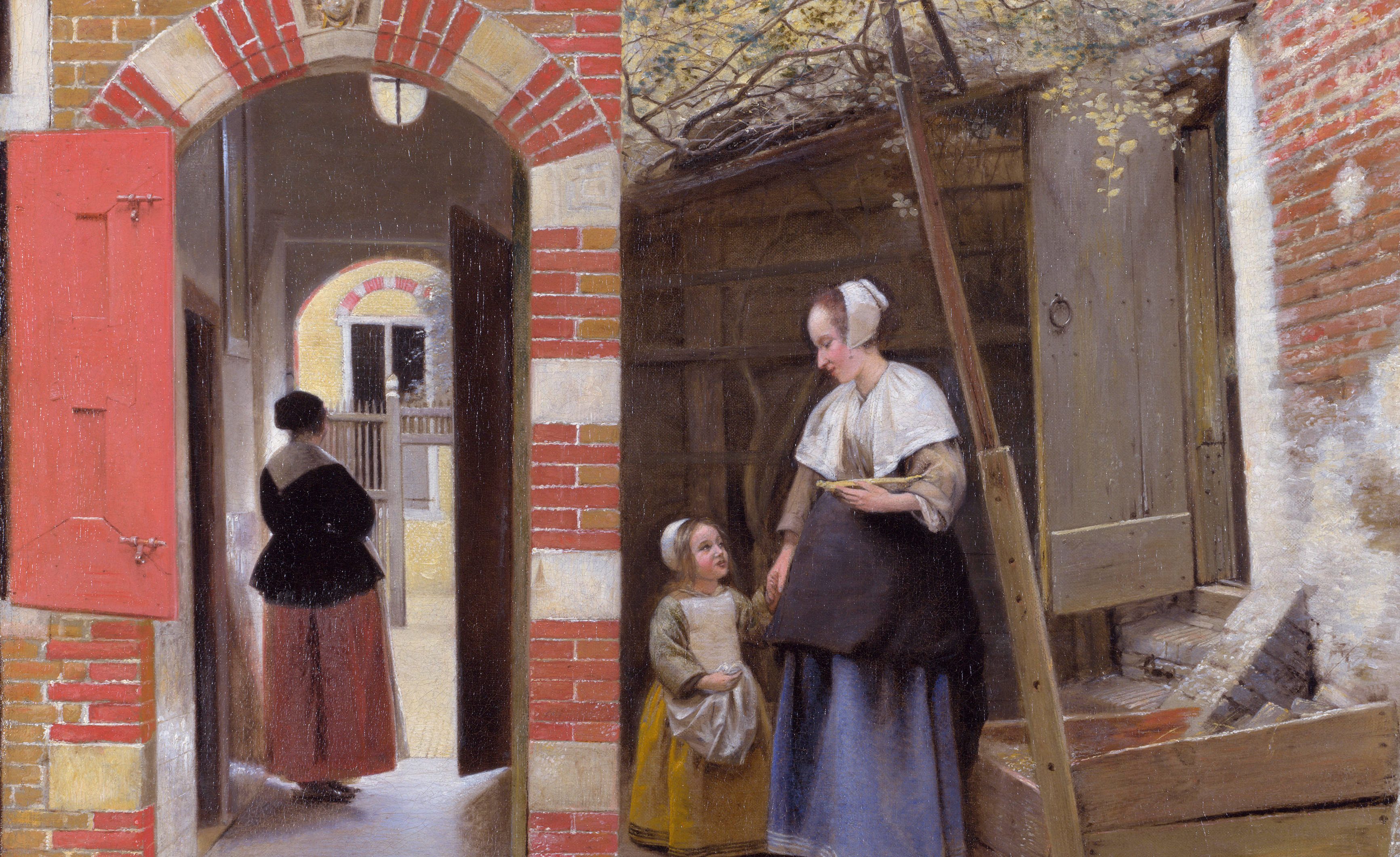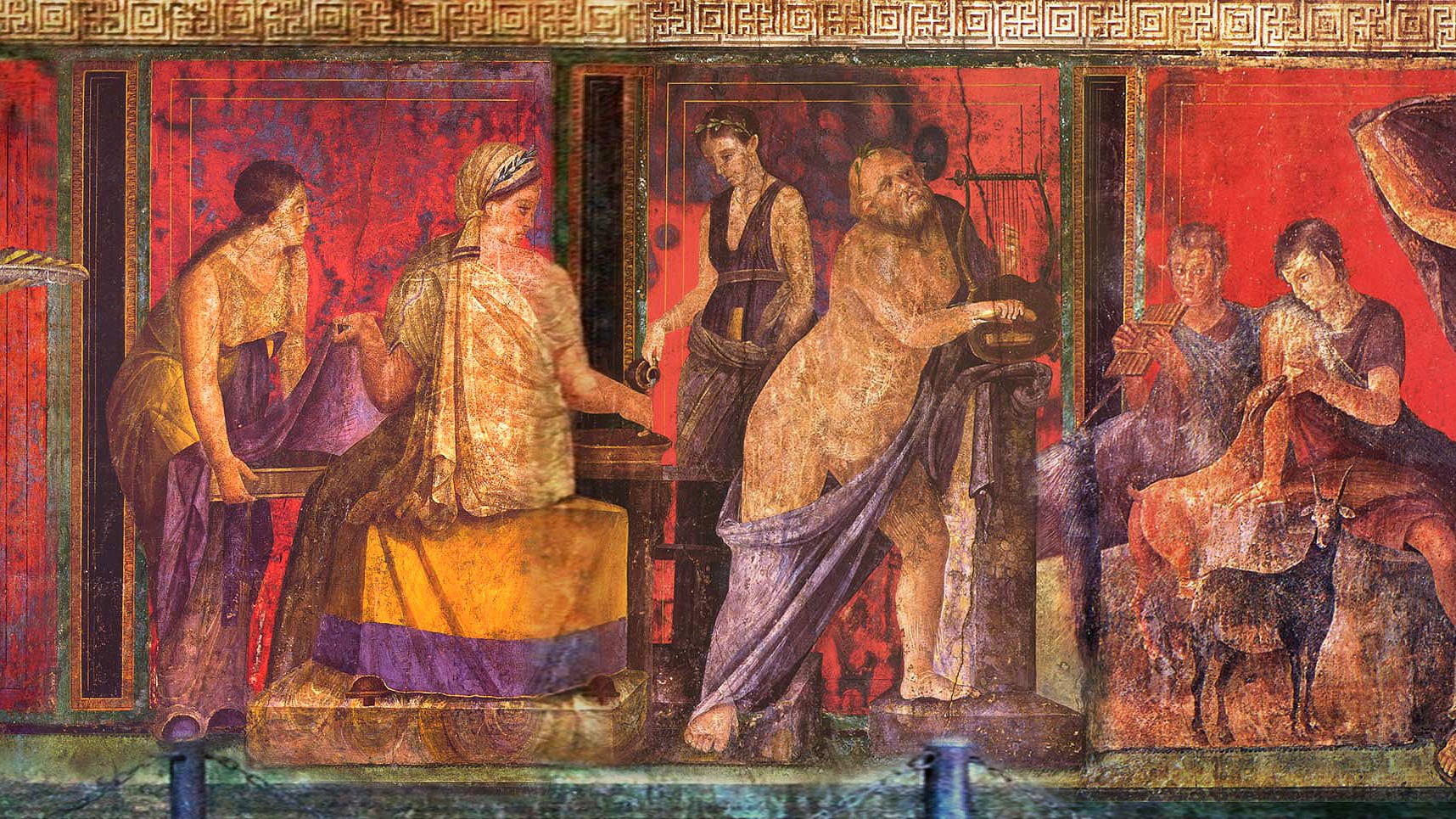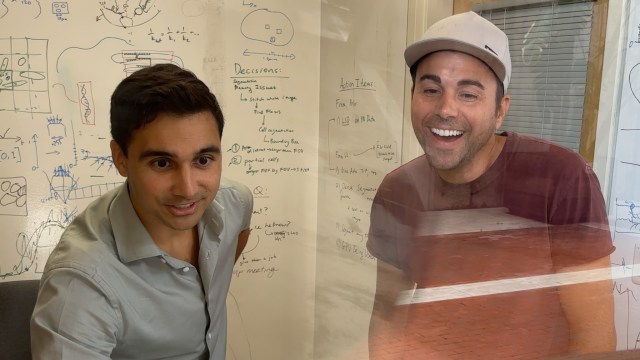Vesuvius Challenge: Can AI decipher these mysterious ancient scrolls?

- Herculaneum’s Villa de Papiri contains hundreds of ancient texts once thought lost to time.
- Carbonized during the eruption of Mt. Vesuvius, the faded handwriting can only be deciphered by AI.
- With the first letters finally discovered, contestants fight for the grand prize.
On August 24, 79 AD, around noon, Mount Vesuvius erupted, covering the nearby Roman settlements of Pompeii and Herculaneum in plumes of blistering hot smoke. One of the biggest and most famous natural disasters of the ancient world, the eruption is thought to have killed close to 16,000 people. At the same time, the volcanic ash expelled from Vesuvius’ bowels preserved countless murals, artifacts, and — in the case of Herculaneum’s Villa dei Papiri — even the contents of an entire library.
“It really is an amazing combination of circumstances that allowed its preservation,” Robert Fowler, emeritus professor of Greek at the University of Bristol, told Big Think. “The villa was at exactly the right distance from the volcano. The temperature was neither too hot nor too cold. Had it been any cooler, the eruption would have set it on fire. Instead, it carbonized everything — not only the papyri, but all kinds of organic material. And then came a mudflow, sealing the whole thing off from bacteria or other destructive agents.”
According to Fowler, the Villa dei Papiri is the only classical library to survive in its entirety, and its contents include many a text that was believed to have been lost to time. There are several parts of On Nature, the magnum opus of the life-affirming philosopher Epicurus, as well as excerpts of On Vices and Virtues, written by his student, the poet Philodemus. The library is also thought to contain up to a third of all 700 works of the Stoic philosopher Chrysippus, whose oeuvre was once thought to have been completely destroyed.
The library’s scrolls — some 1,100 in total — are a dream come true for any Hellenist. That is, if only we could read any of them. Although the warm embrace of Vesuvius protected the scrolls from iconoclasts and pathogens, it also caused them to carbonize and crumple up. Attempts to unroll the scrolls following their discovery in the mid-1700s resulted in their partial, at times near-complete disintegration – a fate Fowler attributes, rather optimistically, to over 80% of the library’s initial contents.
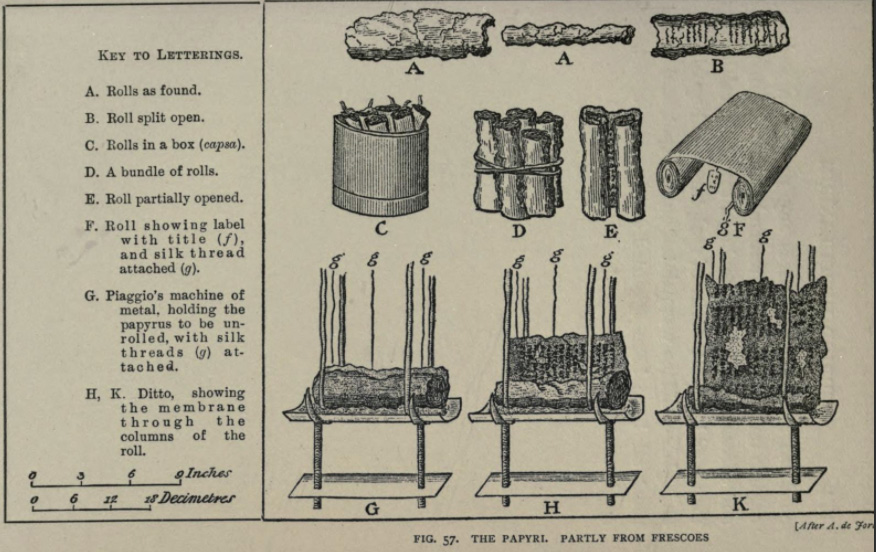
Previous generations of researchers employed scribes to peek into the rolled-up centers of the scrolls and copy what bits of text they were able to recognize – a task eventually relegated to CT scanners. People hoped modern technology could solve the mystery in seconds; instead, the scanners performed even more poorly than the human eye had done. This, explains software engineer Luke Farritor, is because “the ancients used soot from their candles as ink, and when the papyrus got burned, the whole thing turned into soot,” making the ink largely undetectable.
Since CT scanners can only pick up on magnetic signals, and carbon is completely non-magnetic, researchers needed a different type of technology to decipher the scrolls. Farritor, an undergraduate student from the University of Nebraska-Lincoln, provided. He is one of hundreds of contestants who are participating in the so-called Vesuvius Challenge, a public competition to reconstruct the Villa de Papiri using AI. He is also a leading contestant for its $700.000 Grand Prize, to be awarded at the end of this month.
Inside the Vesuvius Challenge
The Vesuvius Challenge, launched at the start of 2023 by University of Kentucky computer science professor Brent Seales and funded by Silicon Valley investors like Xamarin CEO Nat Friedman, has but one objective: to develop and train an artificial intelligence model capable of turning the fossilized ink back into discernable letters and save the library’s contents from extinction.
While some contestants work with fully-fledged models of their own, others create code for smaller, more specific tasks. One of the award-winners (there are many honors aside from the top prize), Tom Wei, focused on the task of segmentation. “Because the Herculaneum scrolls are tightly rolled up and the inner layers only visible in the form of CT volumes,” he told Big Think, “it’s necessary to digitally ‘unroll’ these layers so that AI models can visualize the flattened ink signal. What makes my code special is that it places heavy emphasis on scalability and automation, being an intelligent tracing algorithm rather than a fully supervised workflow.” In the future, he hopes segmentation can be achieved by algorithms with little no to human supervision.
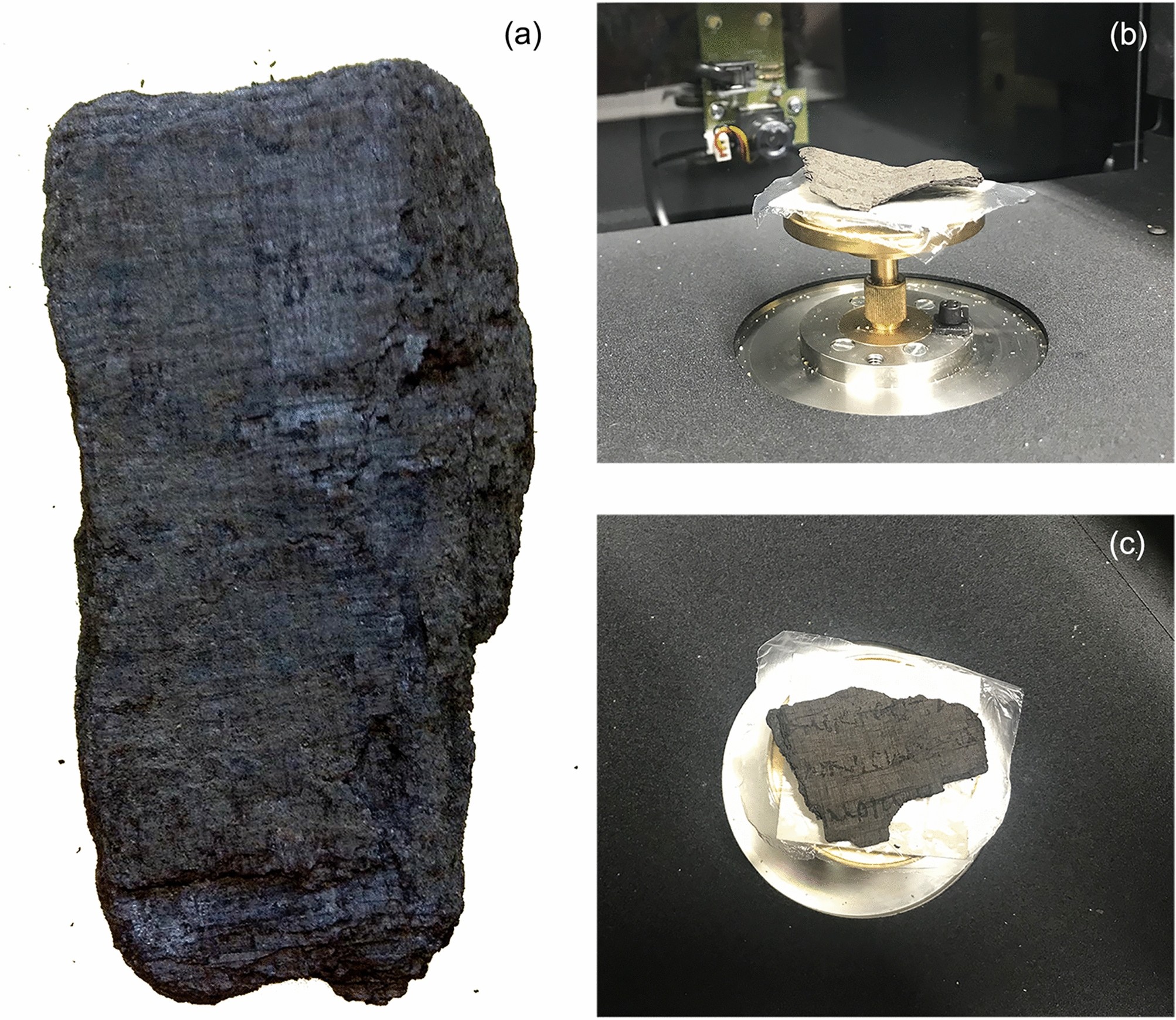
The Vesuvius Challenge is not an individual race so much as it is a relay, with the discoveries of one coder enabling the breakthroughs of another. One person many contestants mention being indebted to is Casey Handmer, who was among the first to locate significant portions of ink. Handmer’s eureka-moment came when, while surveying the inside of the scrolls with their own eyes, they observed a kind “crackle pattern” which, after going back in with the computer – “very basic image manipulation code, nothing more sophisticated than Photoshop,” they say – turned out to be lettering.
Farritor, inspired by Handmer’s crackles, began using them to train his machine-learning model. With each new bit of crackle discovered, his model became better and better at reconstructing the text – so much so that one night, while Farritor was out at a party, he picked up his phone only to find “three Greek letters on my screen I had never seen before.” The advancement put him within spitting distance of the Vesuvius Challenge’s First Letters Prize, awarded to the first individual to find 10 letters in an area of 4 square centimeters, which he ended up winning in October. Second place went to Youssef Nader, a biorobotics grad student from Berlin, whose own discovery took place moments after Farritor’s.
The next page
After the first letters had been found, they were presented to a team of linguists and historians for verification. Featured on the team was Fowler, who walked Big Think through the submissions of both contestants. “Porphyras,” he declares, tracing his cursor over the AI-generated text imposed on an original piece of scroll. It means “purple,” though, because the rest of the sentence is missing, it is unclear whether the word was used as a noun (i.e. “cloths of purple”) or adjective (“purple dye”).
Other words followed. Elsewhere in the library’s digital assets, Fowler points towards a group of markings that, he says, spell out the word “music.” Perhaps it’s part of a treatise on the subject. Perhaps that treatise was written by Philodemus, who seems to be one of the best-represented authors in the villa, as well as its possible owner.
Time will tell whether any of this is true. For now, contestants are concerned with the grand prize, awarded to the first person to produce not one but four separate passages from two scanned scrolls. “I’m not yet there,” Farritor admits, “but I’m optimistic I’ll be able to get there soon. I’ve been working day and night on winning that thing.”
